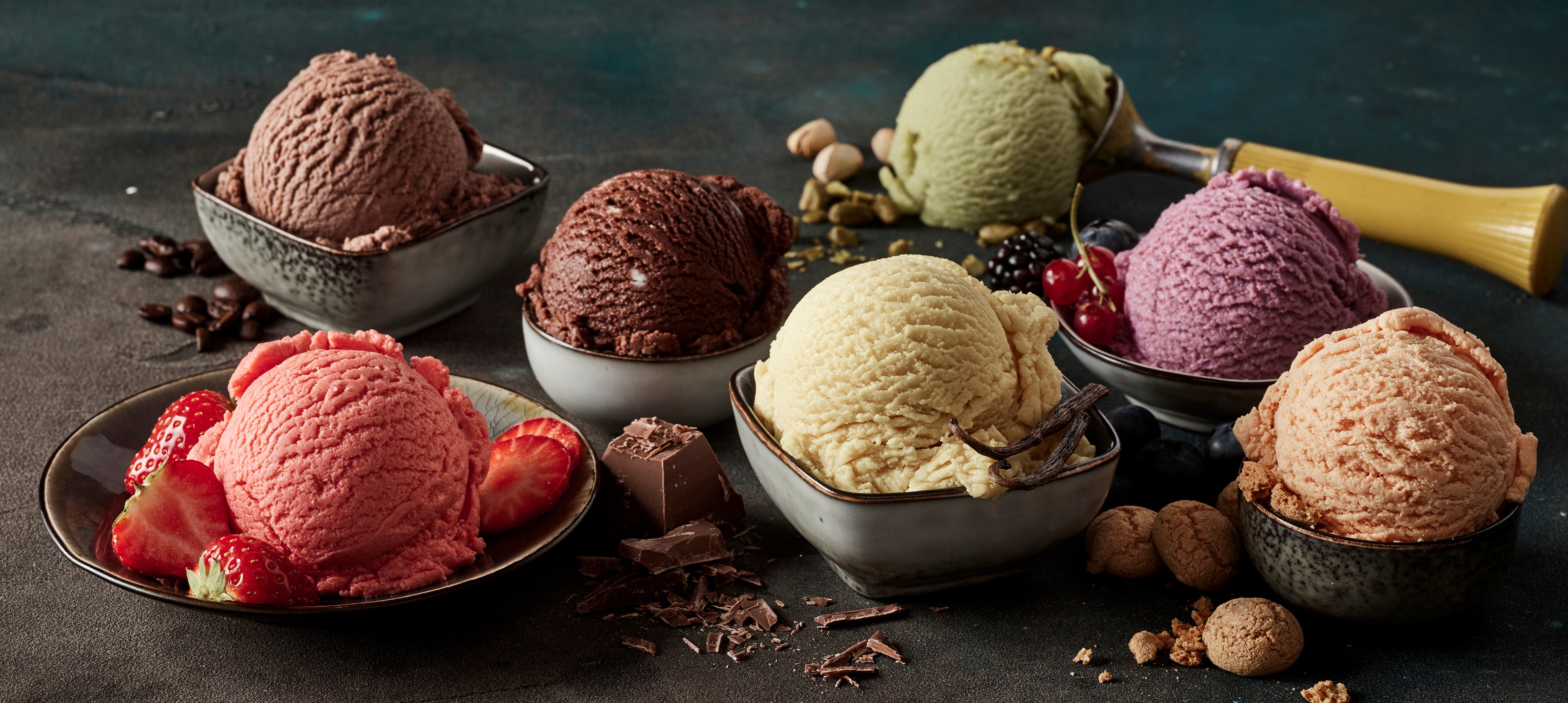The importance of raw materials and balance in the manufacture of ice cream

The Art and Science of Balancing Ice Cream Ingredients
When we analyze the core ingredients of ice cream, we find two main components: water and solids. The solids include fats, milk powders, sugars, and stabilizers. The first and most crucial exercise in making great ice cream is to achieve a perfect bond between these solid elements and the water. Essentially, not a single drop of water should be left "free," and no solid should be unrelated to the water.
It All Starts with High-Quality Raw Ingredients
Imagine you prepare two ice creams using the same formula and process. However, if you start with ingredients of different quality, the final flavor and aroma of each will be dramatically different. Therefore, to produce top-quality ice cream, you must apply the correct technique; however, it is equally important to start with the best ingredients you can find.
In terms of profitability, the price difference between high-end and medium-quality ingredients is often minimal when broken down per serving. Furthermore, your final product will have a greater commercial value—and you will have greater professional satisfaction—when you build your creations from the very best.
The Science of the Perfect Balance
Achieving that perfect bond between water and solids can happen in several ways. For instance, some solids, such as sugars, dissolve completely in water to form a proper solution. Others, such as fat, never dissolve. Consequently, we must use a process called emulsification to disperse the fat into tiny particles and bind them stably with the water molecules.
Balancing Different "Families" of Ice Cream
Not all ice creams have the same ingredients. A rich chocolate ice cream is very different from a liqueur-based ice cream or a fruit sorbet. And yet, despite these notable differences, all three must have the same scoopable texture and coexist in the same display freezer.
This challenge prevents us from using a single, universal formula. Instead, we must create a different balance for each type of ice cream. The world of frozen desserts can be classified into these 16 large families:
- White cream
- Egg yolk cream
- Fruit sorbet
- Yogurt cream
- Chocolate cream (couvertures, cocoa)
- Nut creams (hazelnuts, walnuts, pistachios)
- Fruit or citrus cream
- Spice or aromatic herb cream
- Spice or aromatic herb sorbet
- Liqueur cream
- Liqueur sorbet
- Fruit sorbet with cava
- "Salty" creams
- "Salty" sorbets
- Low-calorie creams
- Low-calorie sorbets
The AussieBlends® Solution
AussieBlends offers a wide variety of professionally balanced Ice Cream Mixes to cater to the needs of any ice cream maker. We craft each blend with premium, GMO-free, egg-yolk-free ingredients. Our mixes are also Kosher, Halal, and Gluten-Free, and our Dairy Blends use milk from grass-fed cattle. In short, by using AussieBlends®, you can skip the complex balancing act and get straight to creating delicious, high-quality frozen desserts.

